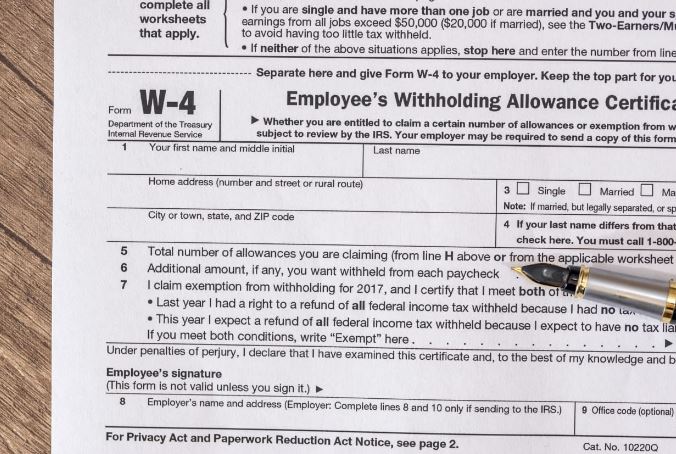Tax Day is looming and if you are planning to prepare and file your taxes on your own, you need to understand the common tax forms out there. Every January brings about a slew of different forms, arriving in the mail or electronically, documenting your income from the previous year.
Read on to learn more about some of the common tax forms you can expect to see or to work with as you prepare your taxes.
1. W-4
The W-4 form may be one that you haven’t seen in a while unless you’ve recently started a new job or changed your withholdings. The W-4 form is the Employee’s Withholding Allowance Certificate and tells your employer how much tax to withhold from your paycheck. You have to fill one out before you start your employment and you might not touch it again unless you want to adjust your withholdings.
Be sure you do your homework ahead of time to know how much you want to be taken out. If you have too little taken out, you’ll owe taxes when you file. If you have too much taken out, you’ll end up with a refund at tax time.
2. W-2
By law, employers must provide their employees with a W-2 form by January 31st each year. The W-2 form is your Wage and Tax Statement that details the wages that you made during the previous year and how much was withheld for income, Social Security, and Medicare taxes.
If you are a business owner, check out how to make a W2 online for your employees.
3. 1099-MISC
The 1099 form is to document any income that you receive as a freelancer or contract worker or if you are self-employed. If you have received over $600 from an organization or employer over the year, they have to issue you a 1099 form.
4. 1098
The 1098 form is for homeowners who are still paying a mortgage on their home. It documents the mortgage interest paid, the outstanding balance on your mortgage, mortgage insurance premiums, and property taxes paid. This information is important for your taxes, as there are tax codes that allow for tax breaks due to mortgage interest and property taxes paid.
5. 1040, 1040EZ, and 1040A
These are the forms that comprise your actual tax return. Which form you complete will depend on your financial situation. The 1040 form (also known as the “long form 1040”) is used for anyone making over $100,000 a year, those who itemize their deductions, report self-employment income, or report income from the sale of a property, among other factors.
The 1040EZ is a shorter and simpler form and is used for people making less than $100,000, your interest income is less than $1,500, and you are a single filer or married filing jointly.
The 1040A falls somewhere between the longer 1040 form and the shorter 1040EZ. The 1040A form allows you to claim more credits than the 1040EZ, but you cannot itemize deductions.
Common Tax Forms You Are Likely to Encounter
These are some of the common tax forms that apply to many people in the US, but this is by no means an exhaustive list! There are hundreds of different IRS forms and the forms you need vary based on your income and your situation like what happens if you don’t file taxes.
Did this information help you understand more about taxes and the IRS forms? Check out some of our other posts for more financial tips and information.
